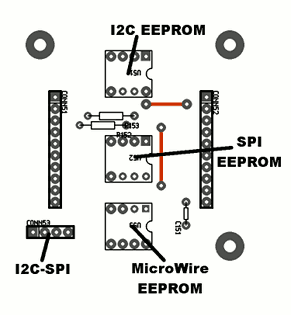Prostoj Spi Flash Programmator

Android provides several options for you to save your app data. The solution you choose depends on your specific needs, such as how much space your data requires, what kind of data you need to store, and whether the data should be private to your app or accessible to other apps and the user. This page introduces the different data storage options available on Android: •: Store app-private files on the device file system.
•: Store files on the shared external file system. This is usually for shared user files, such as photos. •: Store private primitive data in key-value pairs. •: Store structured data in a private database.
Kompjyuternaya prezentaciya prakticheskih dostizhenij professionaljnoj deyatelj. The topic of the lecture: “Digital Kazakhstan” in the context of the development of Industry 4.0.
USB Programmer CH341A LCD Burner Chip 24 EEPROM BIOS Writer 25 SPI Flash TE839. Brand New Unbranded. 5.0 out of 5 stars. 1 product rating - USB Programmer CH341A LCD Burner Chip 24 EEPROM BIOS Writer 25 SPI Flash TE839. USB BIOS EEPROM SPI FLASH Programmer CH341A 24 25 series. Buy It Now +$3.94 shipping. 317 Sold 317 Sold. The SF100 is a high speed 'In System Programming' programmer to update the SPI Flash soldered on board or Freescale MCU using Ezport.
Except for some types of files on external storage, all these options are intended for app-private data—the data is not naturally accessible to other apps. If you want to share files with other apps, you should use the API. To learn more, read. If you want to expose your app's data to other apps, you can use a. Content providers give you full control of what read/write access is available to other apps, regardless of the storage medium you've chosen for the data (though it's usually a database).
For more information, read. Internal storage By default, files saved to the internal storage are private to your app, and other apps cannot access them (nor can the user, unless they have root access). This makes internal storage a good place for internal app data that the user doesn't need to directly access. The system provides a private directory on the file system for each app where you can organize any files your app needs. When the user uninstalls your app, the files saved on the internal storage are removed. Because of this behavior, you should not use internal storage to save anything the user expects to persist independenly of your app.
For example, if your app allows users to capture photos, the user would expect that they can access those photos even after they uninstall your app. So you should instead save those types of files to the public external storage. To learn more, read how to.

Internal cache files If you'd like to keep some data temporarily, rather than store it persistently, you should use the special cache directory to save the data. Each app has a private cache directory specifically for these kinds of files. When the device is low on internal storage space, Android may delete these cache files to recover space.
However, you should not rely on the system to clean up these files for you. You should always maintain the cache files yourself and stay within a reasonable limit of space consumed, such as 1MB. When the user uninstalls your app, these files are removed. For more information, see how to.
External storage Every Android device supports a shared 'external storage' space that you can use to save files. This space is called external because it's not guaranteed to be accessible—it is a storage space that users can mount to a computer as an external storage device, and it might even be physically removable (such as an SD card). Files saved to the external storage are world-readable and can be modified by the user when they enable USB mass storage to transfer files on a computer. So before you attempt to access a file in external storage in your app, you should check for the availability of the external storage directories as well as the files you are trying to access. Most often, you should use external storage for user data that should be accessible to other apps and saved even if the user uninstalls your app, such as captured photos or downloaded files.